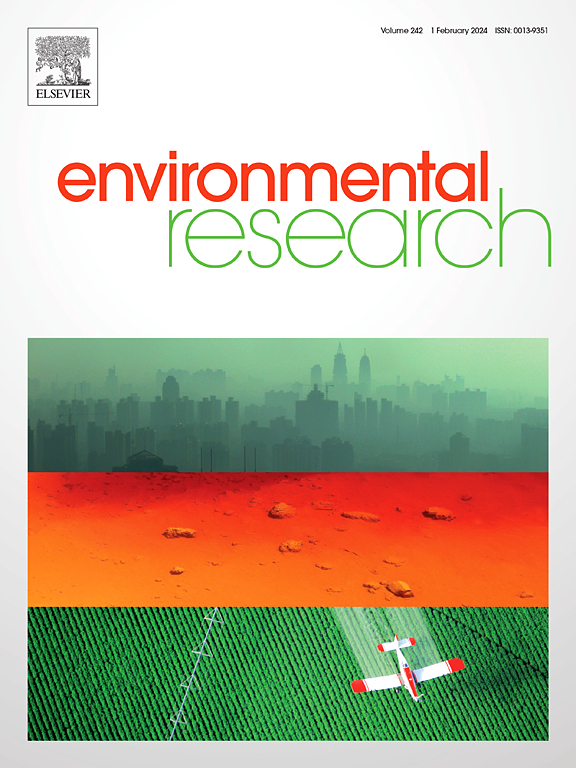Anthropogenic activities disturb phytoplankton taxa and functional groups in an urban river
IF 7.7
2区 环境科学与生态学
Q1 ENVIRONMENTAL SCIENCES
引用次数: 0
Abstract
Anthropogenic activities have substantial impacts on river ecosystems, yet how phytoplankton taxa and functional groups respond to varying levels of anthropogenic activity in urban rivers remains poorly understood. Herein, we investigated the sensitivity of phytoplankton taxa and functional groups to anthropogenic disturbances in the Bahe River, which experiences increased anthropogenic activity intensity from upstream to downstream. We found that both phytoplankton composition and niche breadth exhibited distinct variations among the three reaches with different anthropogenic disturbances. Notably, we observed a marked increase in the abundance of potential bloom-forming species in the river section with the highest anthropogenic disturbance, suggesting that anthropogenic activities might promote the growth and proliferation of these species. Compared to geographical and physiochemical factors, anthropogenic activities were identified as the primary driver of changes in phytoplankton taxa and functional groups. Increasing levels of anthropogenic activities potentially led to higher concentrations of ammonium nitrogen and total phosphorus, further influencing niche differentiation among phytoplankton taxa and functional groups. Our study offers profound insights into the impacts of anthropogenic disturbances on phytoplankton, emphasizing the necessity of integrating watershed-scale human activity management into strategies for controlling phytoplankton in urban rivers.

人类活动干扰了一条城市河流中的浮游植物类群和功能群。
人为活动对河流生态系统产生了巨大影响,但人们对城市河流中浮游植物类群和功能群如何应对不同程度的人为活动仍知之甚少。在此,我们研究了灞河中浮游植物类群和功能群对人为干扰的敏感性。我们发现,浮游植物的组成和生态位广度在受到不同人为干扰的三个河段中表现出明显的差异。值得注意的是,在人为干扰强度最大的河段,我们观察到潜在水华形成物种的丰度明显增加,这表明人为活动可能会促进这些物种的生长和增殖。与地理和理化因素相比,人为活动被认为是浮游植物类群和功能群变化的主要驱动因素。人为活动水平的提高可能会导致铵态氮和总磷浓度升高,从而进一步影响浮游植物类群和功能群的生态位分化。我们的研究深刻揭示了人为干扰对浮游植物的影响,强调了将流域尺度的人类活动管理纳入城市河流浮游植物控制策略的必要性。
本文章由计算机程序翻译,如有差异,请以英文原文为准。
求助全文
约1分钟内获得全文
求助全文
来源期刊

Environmental Research
环境科学-公共卫生、环境卫生与职业卫生
CiteScore
12.60
自引率
8.40%
发文量
2480
审稿时长
4.7 months
期刊介绍:
The Environmental Research journal presents a broad range of interdisciplinary research, focused on addressing worldwide environmental concerns and featuring innovative findings. Our publication strives to explore relevant anthropogenic issues across various environmental sectors, showcasing practical applications in real-life settings.
 求助内容:
求助内容: 应助结果提醒方式:
应助结果提醒方式:


